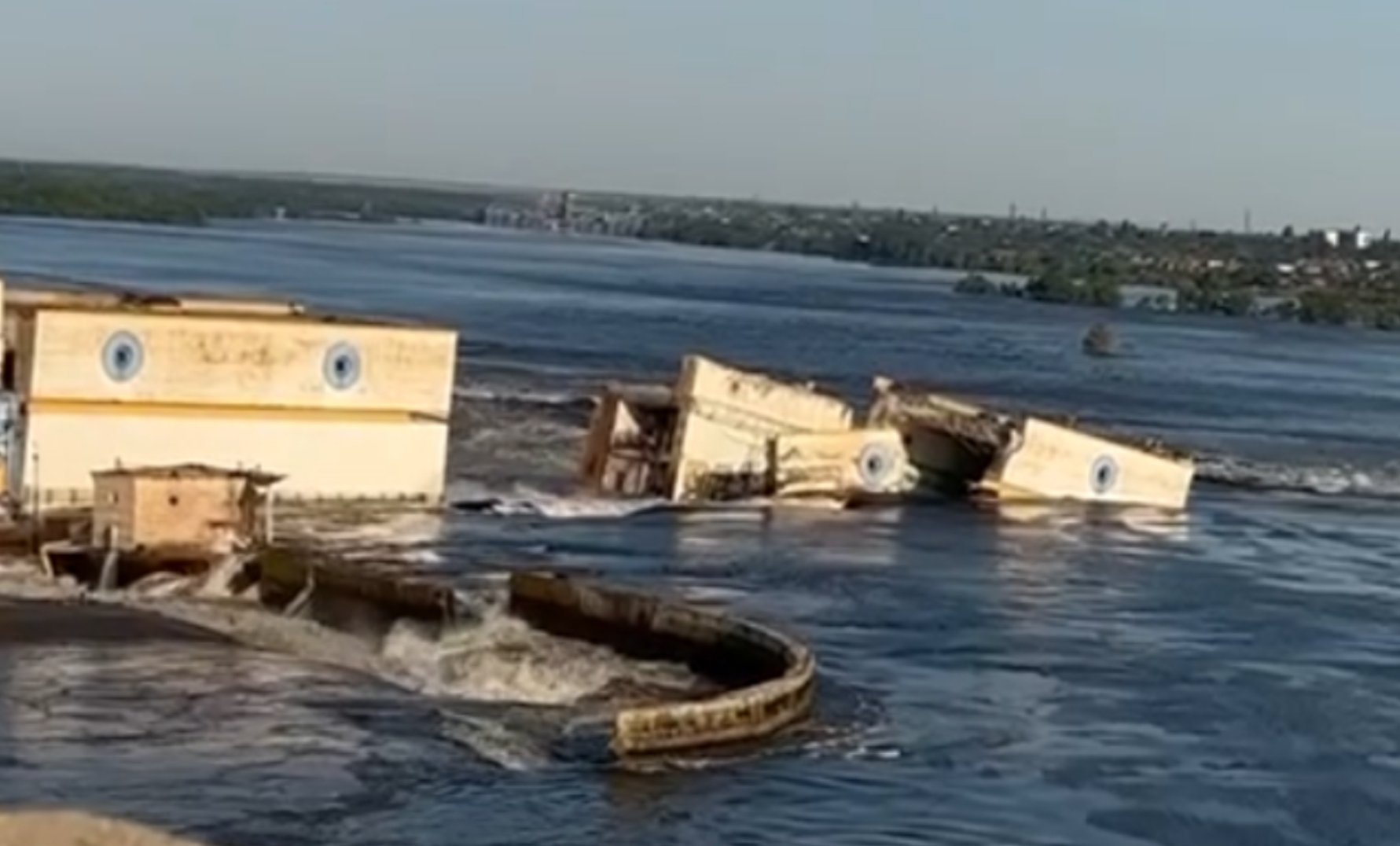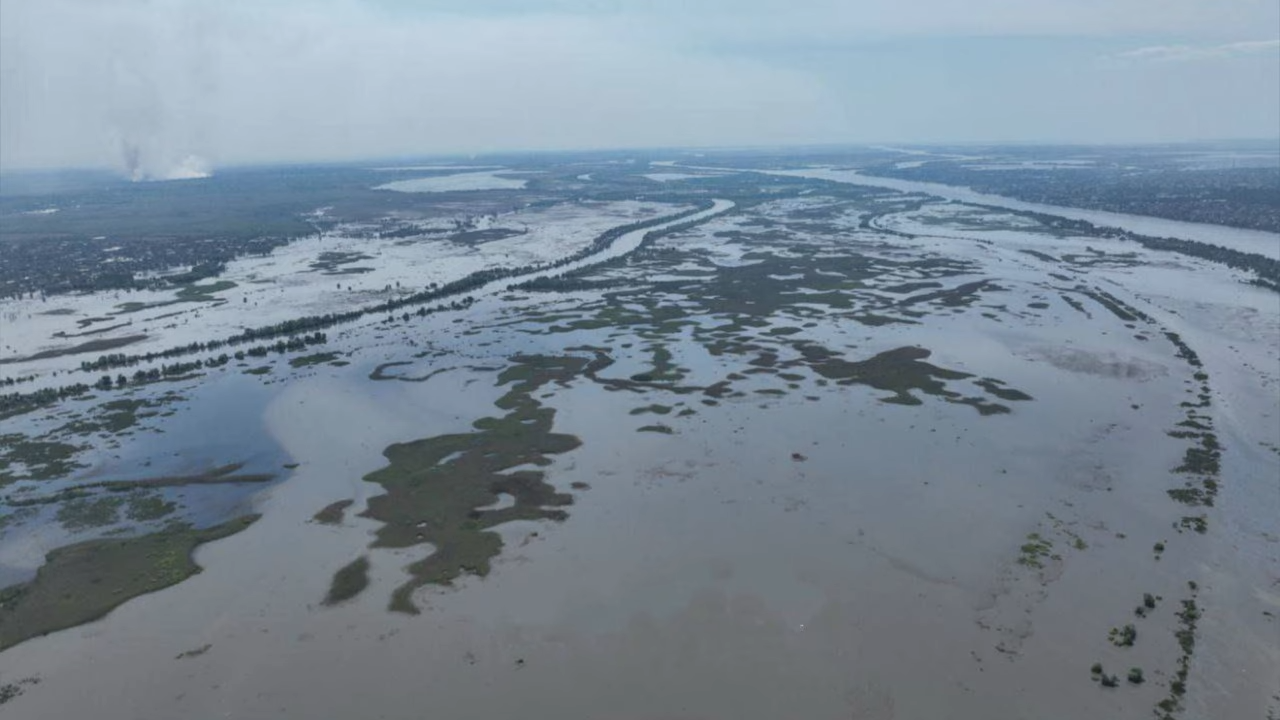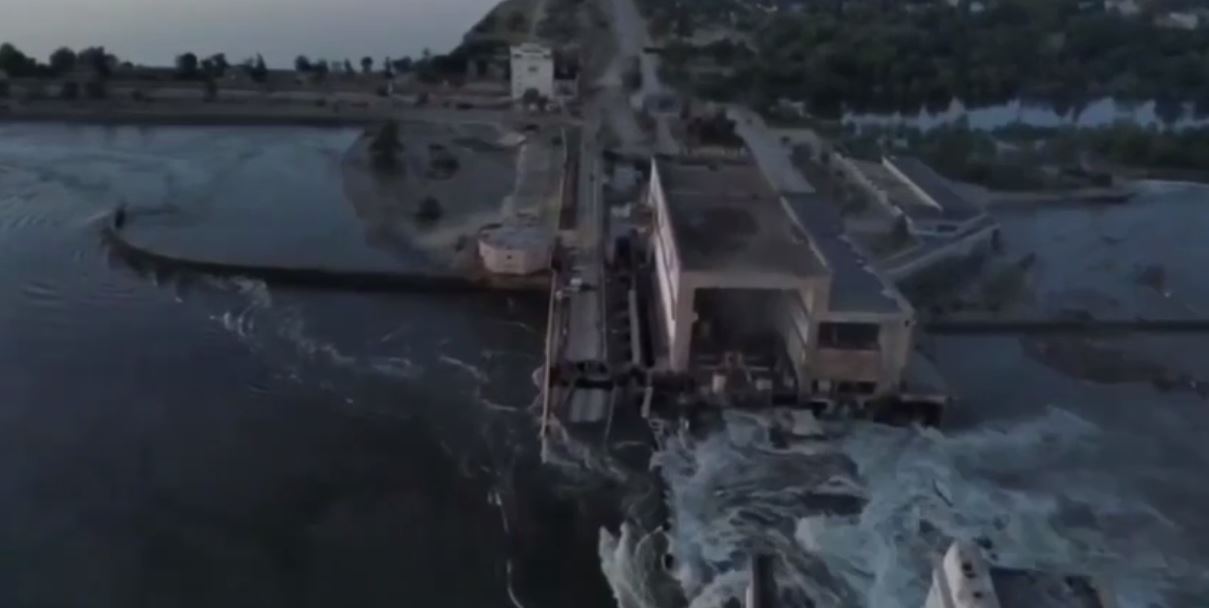Despite Tucker Carlson's rant, Ukraine blowing up the Kakhovka dam is akin to shooting itself in the foot. A more plausible theory is that Russian bungling led to a larger-than-expected explosion, triggering a catastrophe

1. According to experts, the plant was most likely destroyed from the inside
According to Ihor Syrota, the head of the state-owned Ukrhydroenergo company, the Kakhovka dam was extremely resilient to external damage, built to withstand even a nuclear strike. Experts interviewed by The New York Times concurred that structures like this are designed to resist extreme pressure. Therefore, it is highly unlikely that the dam could be ruptured by an outside attack, such as a Ukrainian missile or artillery strike. In the fall of 2022, during Ukraine’s successful offensive into Kherson Oblast, the area surrounding the Kakhovka dam suffered some damage, as Kyiv’s forces hit a bridge that sits atop the dam. Some of the sluices were reportedly impacted by the explosion. Nevertheless, the dam did not suffer such damage that would cause a rupture. While the Times-cited experts said that a spontaneous failure due to the combination of previous shelling and mismanagement is not completely impossible, it would still be a very “suspicious” explanation. This explanation is also inconsistent with the patterns of water discharge and damage observed on satellite images of the dam: if it were damaged, it should have been letting through more water, and the damage should have So far, experts have concluded that an internal, enclosed explosion is the most feasible way of doing serious damage to the dam. According to the chief expert of Ukrhydroproject Mykola Kalinin, the dam was built to withstand an external attack but not an explosion from the inside. He supposes that Russian hydropower experts gave instructions on planting explosives in open spans and inside the turbine hall of the Kakhovka hydroelectric power plant, which allowed to destroy this resilient construction. Since Russians were the only ones with such access to the facility, this seriously limits the list of suspects.2. Dam was controlled by Russia since February 2022
The Kakhovka Hydroelectric Power Plant and the adjacent dam were built on the Dnipro River in 1956, designed as a source of electric power and irrigation for the surrounding regions. The structure helped ships to sail down the Dnipro River, an important trade and transport corridor for Ukraine. The 2,155-kilometer-square Kakhovka Reservoir, positioned upstream from the dam, served as a main water source for many settlements in the area and supplied the nearby Zaporizhzhia Nuclear Power Plant, the largest nuclear station in Europe.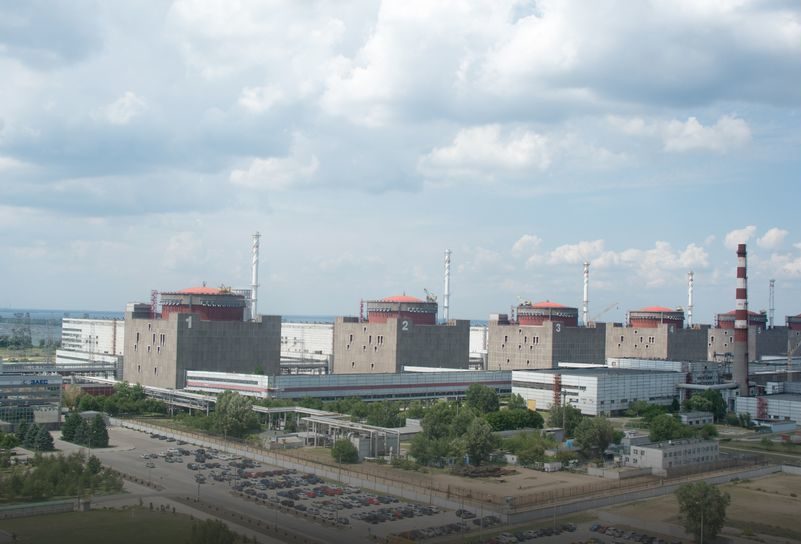
3. Russian accounts of the event contradict themselves, some admit guilt
According to locals, there was an audible explosion at the dam sometimes after 2 a.m., while US spy satellites captured a clear explosion at the dam shortly before the collapse. In their usual fashion, Russian authorities and media quickly provided several different accounts of what transpired that night. Despite the testimony of the locals about an explosion, Vladimir Leontiev, the Russia-installed proxy head in Nova Kakhovka, refuted this, saying that everything was “quiet and calm.” This became the talking line accepted by Russian media for a while.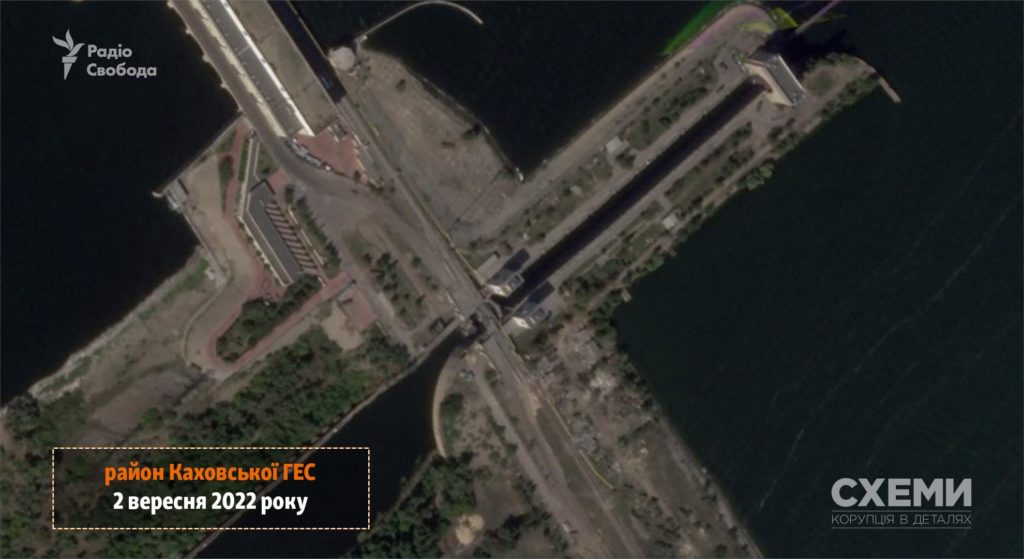
Russian messaging on Kakhovka dam explosion inconsistent, challenging official accusation
4. Ukrainians have the most to lose from the Kakhovka dam's destruction
Trending Now
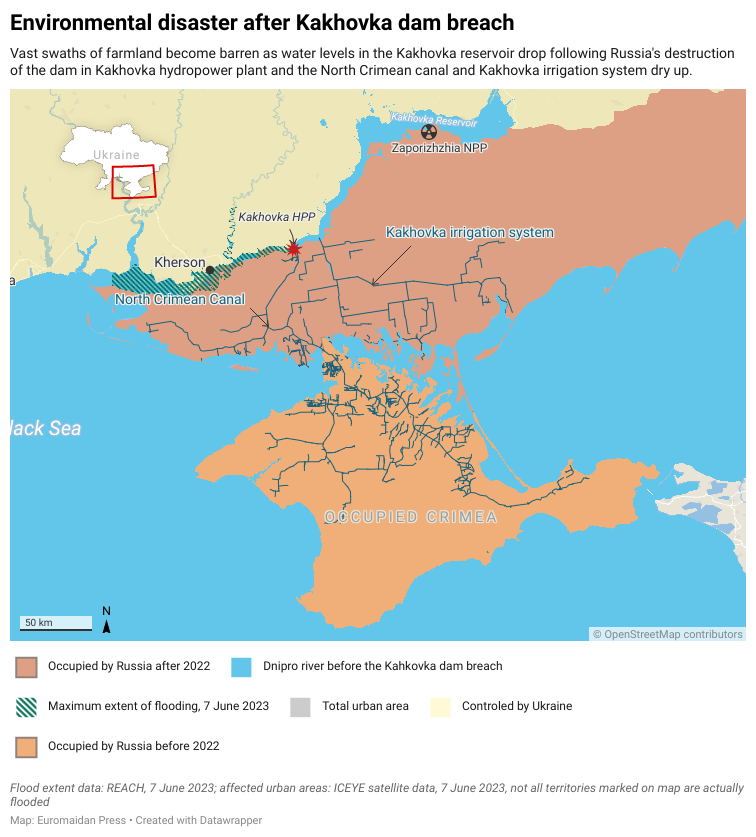 As the current events clearly illustrate, the flooding affects both banks of the river.
The territory that Carlson describes as Russian is, in fact, a Russian-occupied portion of Ukraine. While Kyiv struggles to save as many people as it can from the government-controlled left bank, on the other side, Russia is reportedly not allowing evacuations, safe perhaps for those who hold Russian passports.
Ukrainian farmers are set to lose tens of thousands of hectares of productive land and agriculture might not be possible in southern Ukraine in the near future, with a water crisis looming in four Ukrainian obalsts.
Hundreds of thousands of people may lose access to drinking water, and the disaster threatens food security and energy grid stability in the country.
Toxic substances, absorbed by the river, are set to poison the soil and water. As mentioned above, the Zaporizhzhia nuclear plant is also put at risk.
As the current events clearly illustrate, the flooding affects both banks of the river.
The territory that Carlson describes as Russian is, in fact, a Russian-occupied portion of Ukraine. While Kyiv struggles to save as many people as it can from the government-controlled left bank, on the other side, Russia is reportedly not allowing evacuations, safe perhaps for those who hold Russian passports.
Ukrainian farmers are set to lose tens of thousands of hectares of productive land and agriculture might not be possible in southern Ukraine in the near future, with a water crisis looming in four Ukrainian obalsts.
Hundreds of thousands of people may lose access to drinking water, and the disaster threatens food security and energy grid stability in the country.
Toxic substances, absorbed by the river, are set to poison the soil and water. As mentioned above, the Zaporizhzhia nuclear plant is also put at risk.
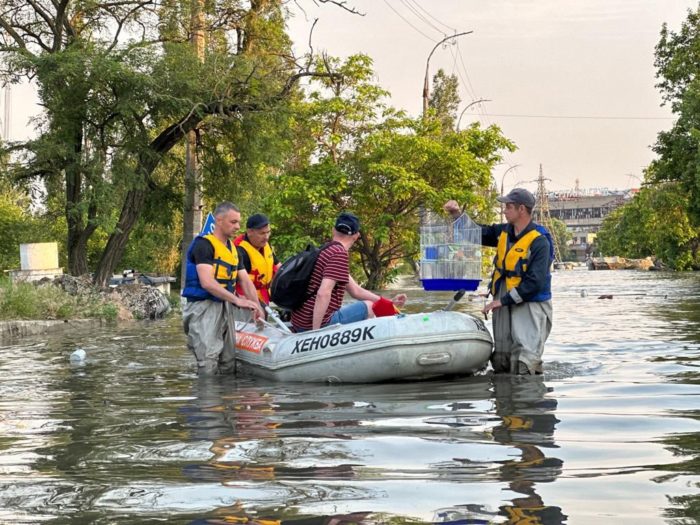
Credit: Ukraine's State Emergency Service.
5. Limited explosion gone wrong?
A potential explanation for such self-inflicted damage is that Russian forces planned only a limited explosion to enlarge the river and prevent Ukrainians from crossing, or simply to distract Kyiv's attention before the upcoming counteroffensive. The operation went wrong, however, and the breach was more extensive than expected. On 6 June, hours after the disaster, Zelensky cited Kyiv's intelligence reports that the sabotage was intentional but conducted "chaotically," allowing Russian equipment to be flooded. The Security Service of Ukraine (SBU), the country's counter-intelligence, published an intercepted call on 9 June, featuring alleged Russian soldiers discussing the sabotage. "(Ukraine) didn't strike it. That was our sabotage group. They wanted to scare people with this dam," said the person identified by the SBU as a Russian serviceman. "It didn't go according to plan, and (they did) more than they planned for."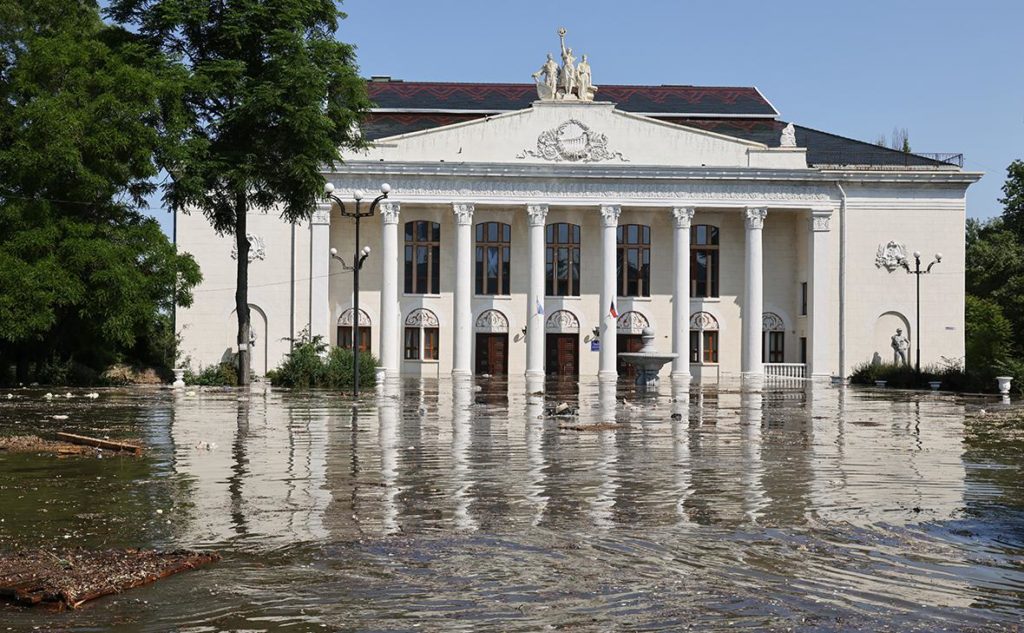
Alya Shandra contributed to this publication.
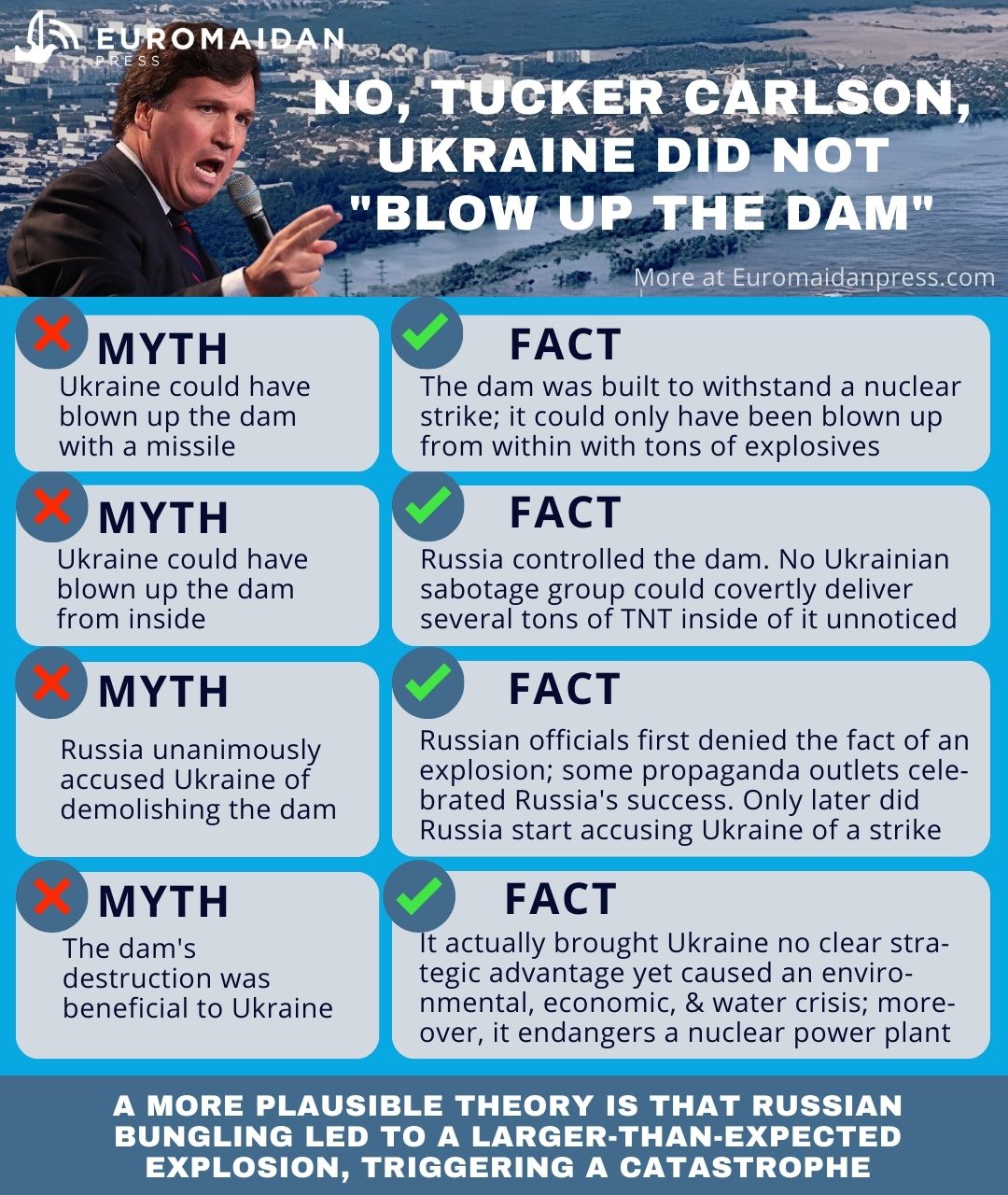
Related:
- Kakhovka dam breach: Hundreds of Ukrainians drown as Russia prevents evacuation, seals off flooded towns
- Earwitnesses recall hearing explosions on night when Nova Kakhovka dam collapsed
- Seismic signals indicate Kakhovka dam explosion – NORSAR
- Russian sabotage group blew up Kakhovka dam; it didn’t go as planned, SBU intercept alleges
- Kakhovka Dam was built to withstand nuclear strike, couldn’t be destroyed from outside – Ukrhydroproject engineering company
- Russian messaging on Kakhovka dam explosion inconsistent, challenging official accusation
- European Parliament recognizes Kakhovka dam destruction as a war crime committed by Russia
- No, the Kakhovka dam could not have collapsed on its own
- Ukrainian dam engineer rules out self-destruction of Kakhovka dam


